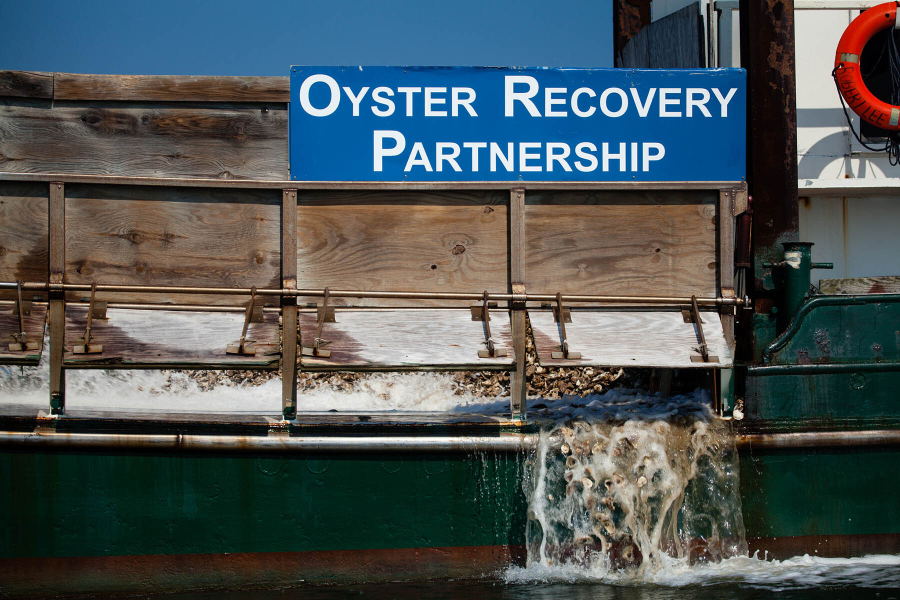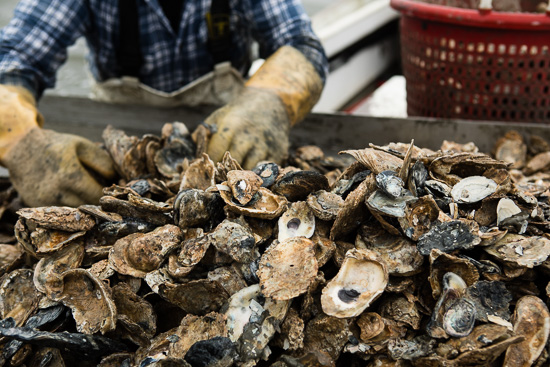Oyster restoration advances in six Chesapeake Bay tributaries
Latest reports from Maryland, Virginia outline progress to restore oyster reefs

Oyster restoration efforts in both Maryland and Virginia have seen significant gains in the past year, according to reports released today by the National Oceanic and Atmospheric Association (NOAA) Chesapeake Bay Office and the Chesapeake Bay Program. The 2016 Maryland and Virginia Oyster Restoration Updates outline progress made in the two states to restore oyster reefs in ten Chesapeake Bay tributaries.
For more than a century, oysters have made up one of the region’s most valuable commercial fisheries. But harvest pressure, disease and habitat loss have led to a severe drop in oyster populations, leaving the bivalves at less than one percent of their historic levels. As part of the Chesapeake Bay Watershed Agreement, Bay Program partners committed to restoring native oyster habitat and populations to ten tributaries by 2025.
Currently, six Bay tributaries have been selected for oyster restoration: three each in Maryland and Virginia. The Oyster Restoration Updates released today describe work accomplished thus far in a process that involves developing a restoration plan, constructing and seeding reefs, and monitoring and evaluating restored reefs.
In Maryland, nearly 800 million oyster seed have been planted in Harris Creek, the Little Choptank and the Tred Avon River. Significant monitoring is underway both at and near the restoration sites, including detailed monitoring to track the sites’ health and research to quantify the benefits of restored oyster reefs. The Maryland Oyster Advisory Commission is discussing naming the next two Maryland tributaries to be selected for oyster restoration projects.
In Virginia, work is underway in the Lafayette, Piankatank and Lynnhaven Rivers. In the Lafayette, 70.5 acres of oyster reefs are functioning at a restored level, leaving less than 10 acres remaining to reach the restoration target. In the Piankatank and Lynnhaven, 25 acres and 63 acres of oyster reefs have been constructed, respectively, and experts are working to set specific restoration acreage goals. The Greater Wicomoco and lower York rivers have been preliminarily selected as the next two Virginia tributaries to be targeted for oyster restoration.

“These updates highlight progress made by Chesapeake Bay oyster restoration partners toward the goal of restoring oysters in 10 tributaries by 2025,” said Peyton Robertson, Director of the NOAA Chesapeake Bay Office and Chair of the Bay Program’s Sustainable Fisheries Goal Implementation Team. “The collective impact of efforts by agencies, nonprofits and academic partners in Maryland and Virginia—including science, planning, implementation and monitoring—is significant.”
Funding for these oyster restoration projects comes from federal, state and local governments as well as nonprofit partners, all working to support goals of the Chesapeake Bay Program. To track progress toward the work to restore oysters to ten Bay tributaries, visit ChesapeakeProgress.

Comments
There are no comments.
Thank you!
Your comment has been received. Before it can be published, the comment will be reviewed by our team to ensure it adheres with our rules of engagement.
Back to recent stories